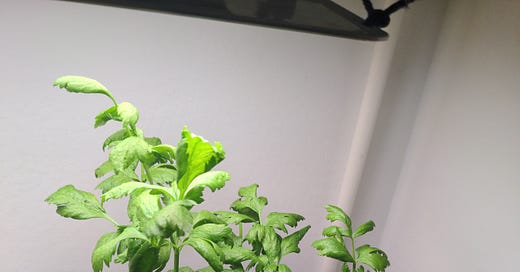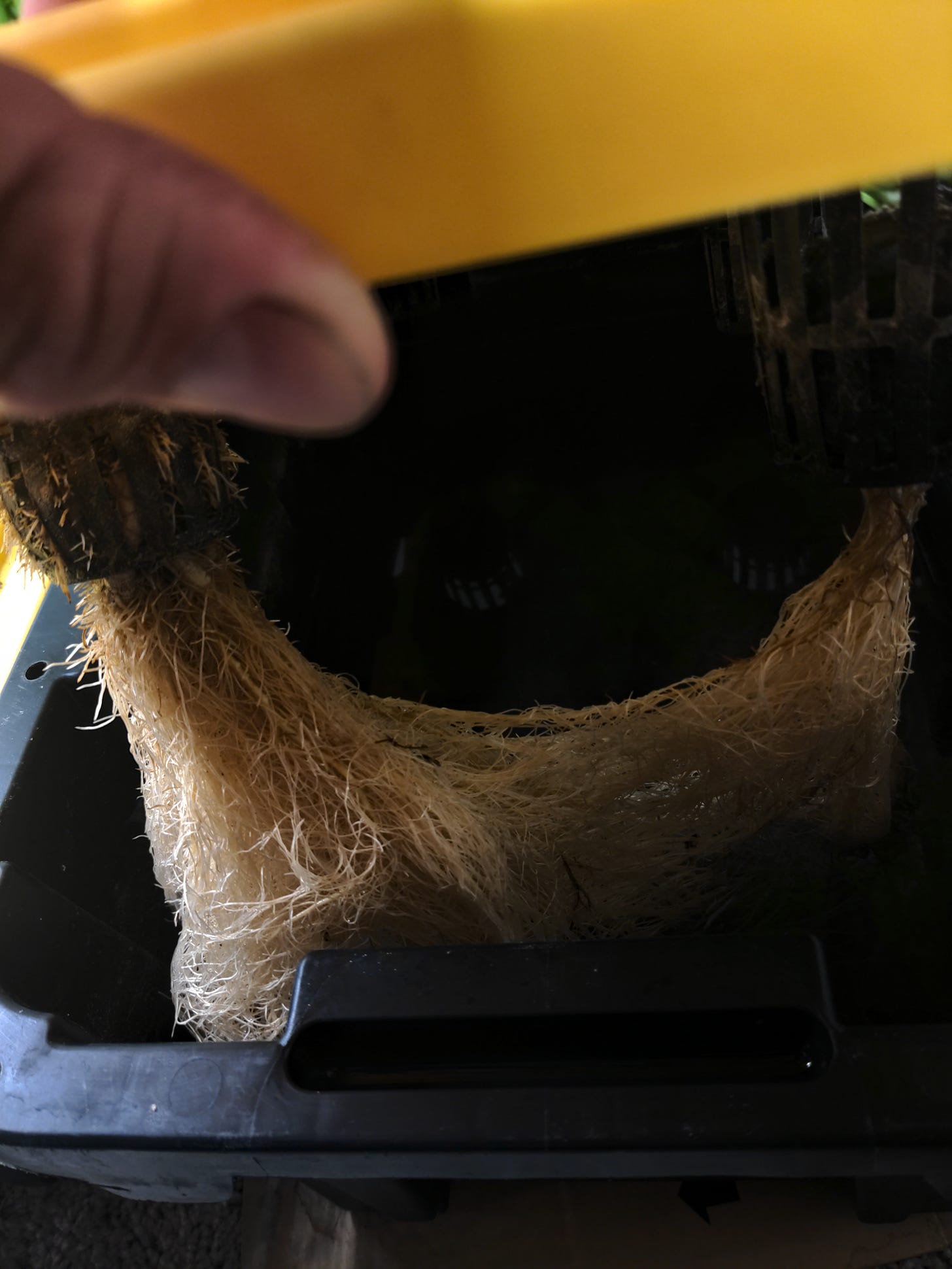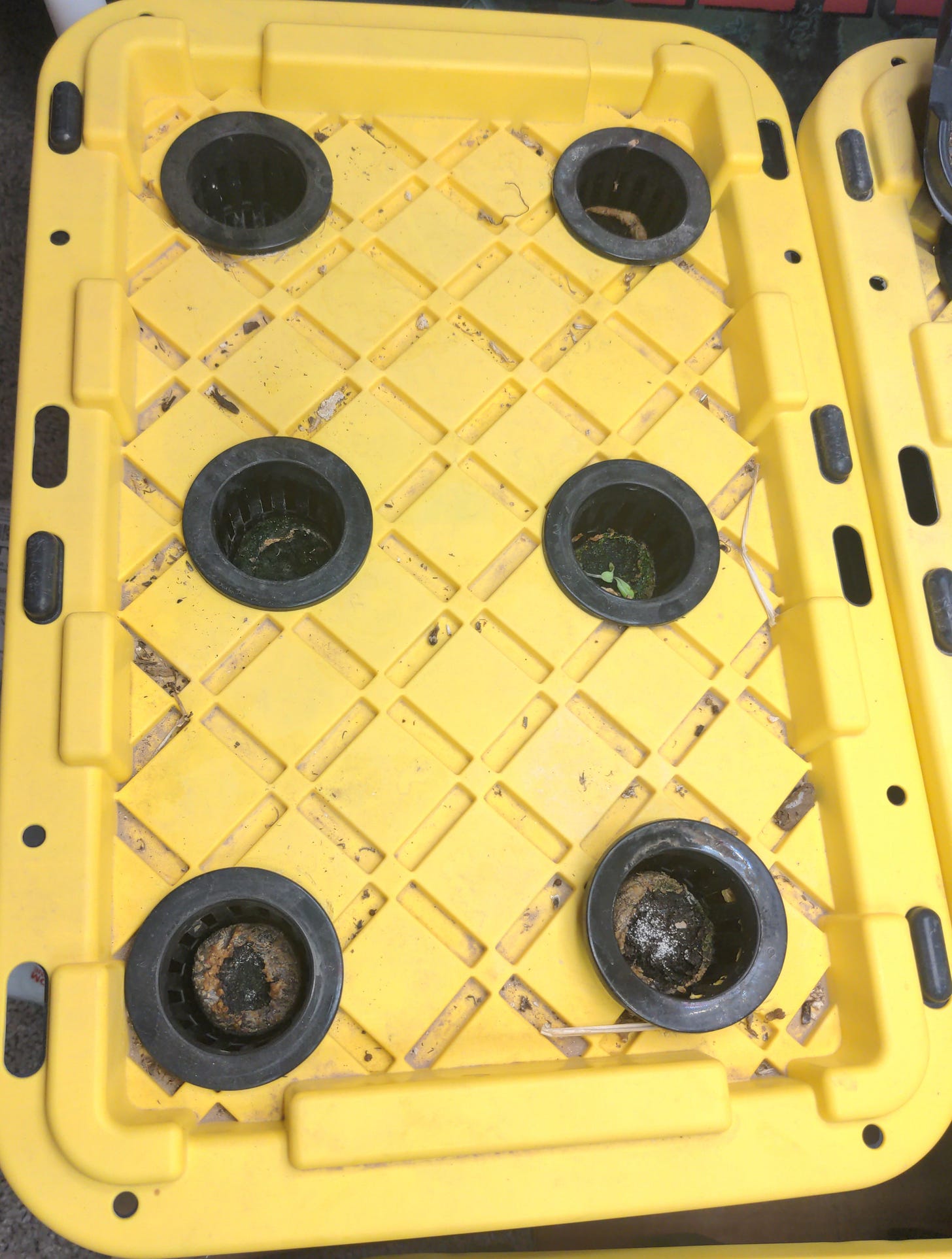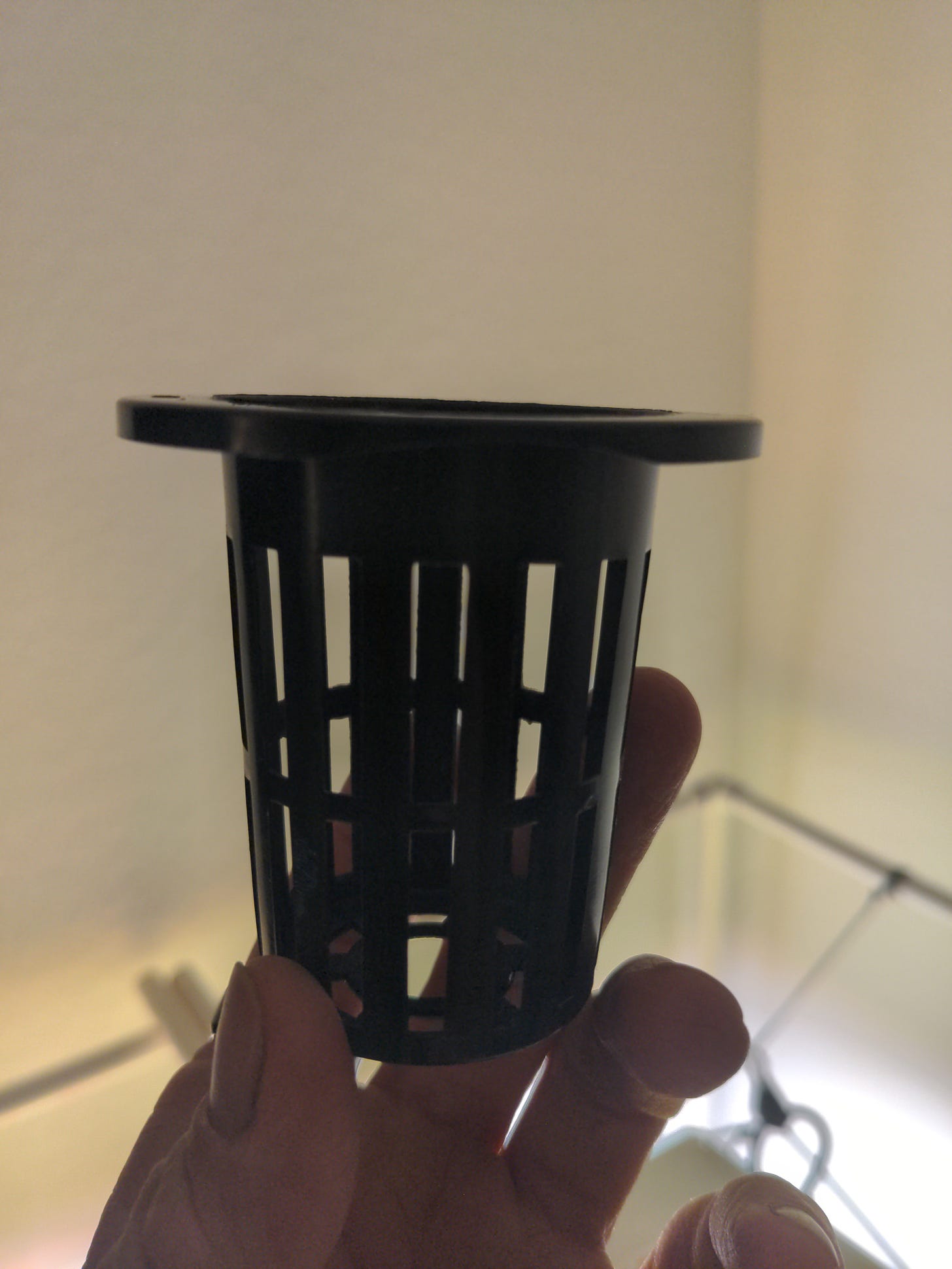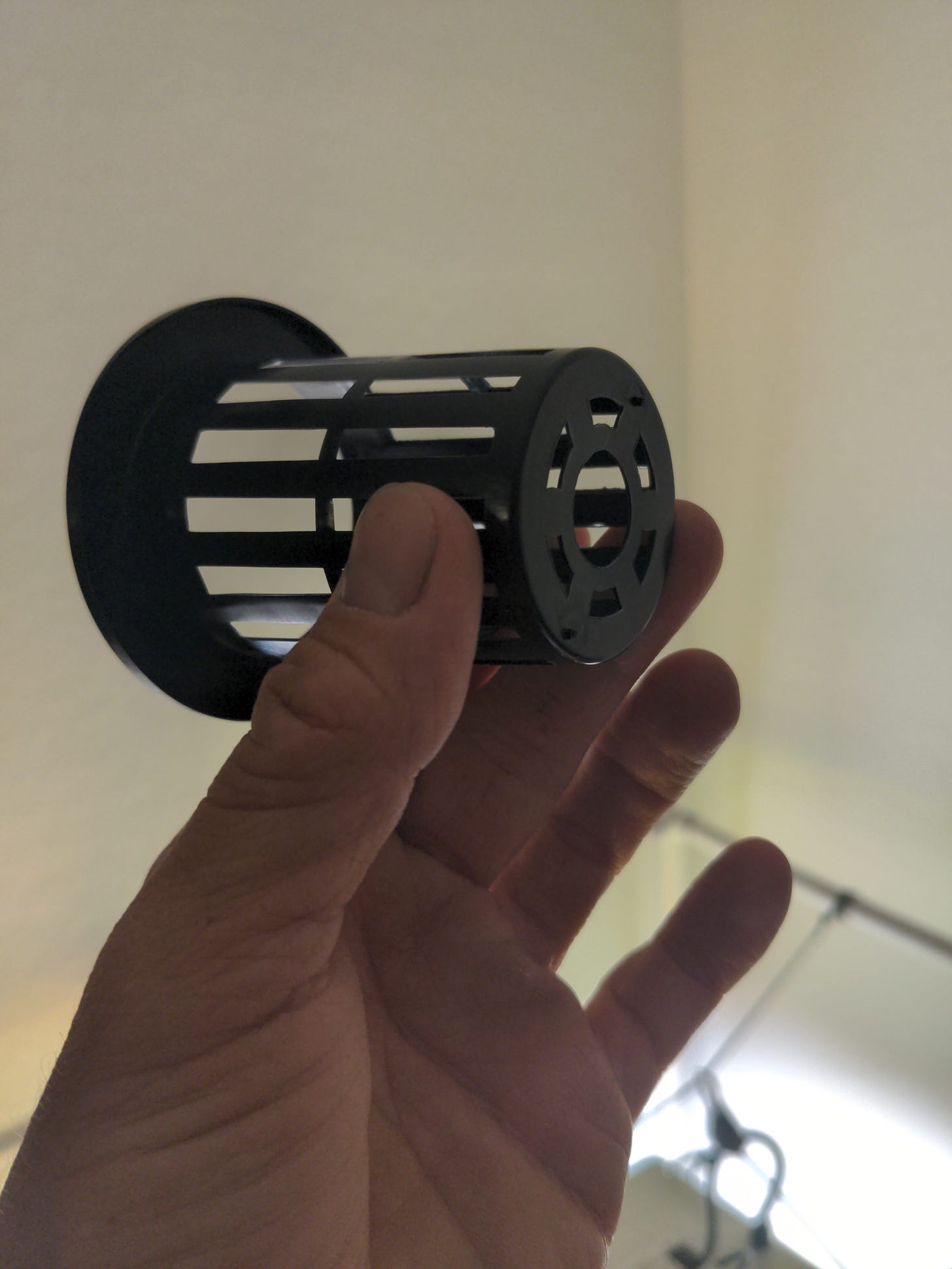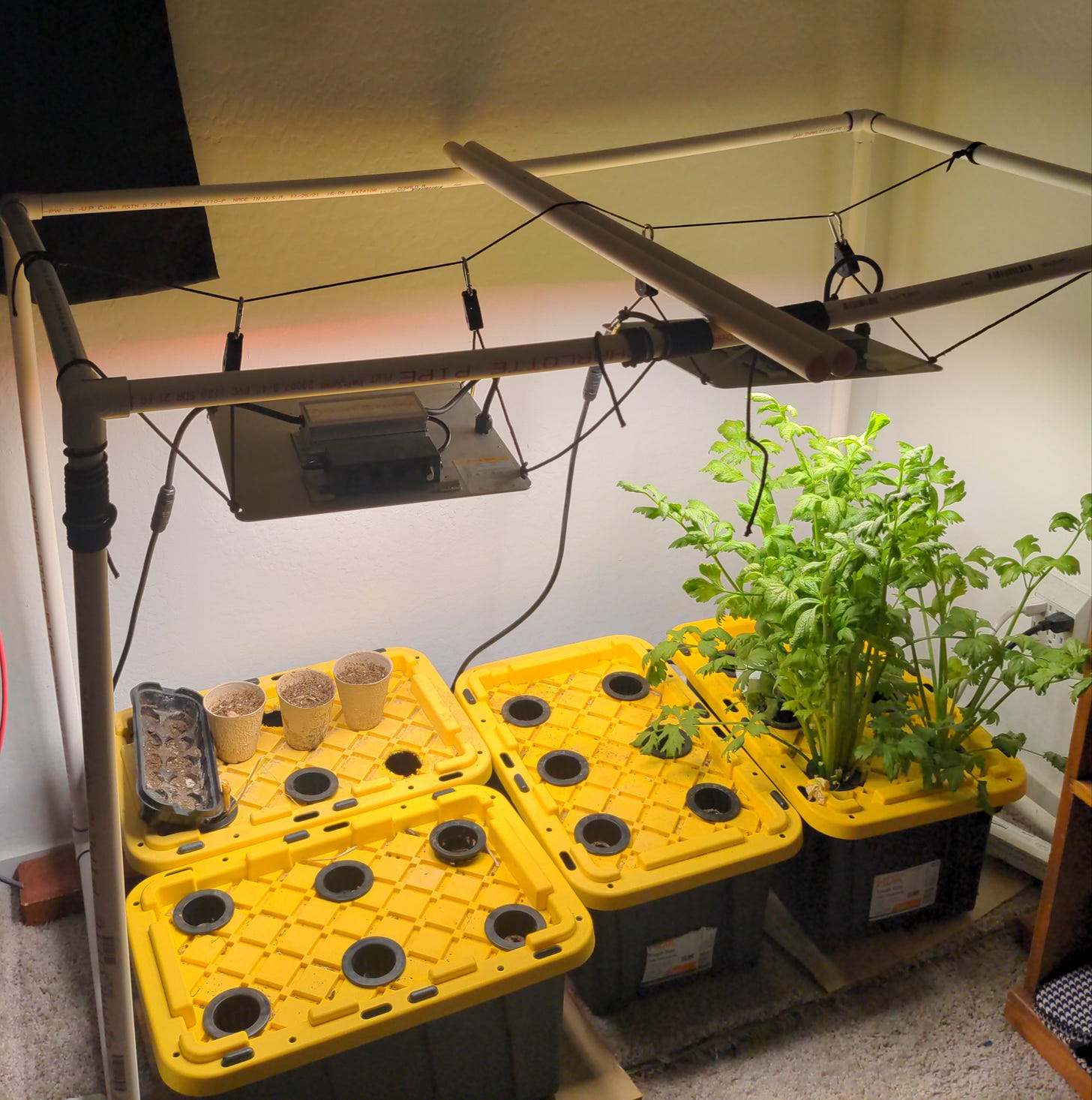Do you like to eat spinach, kale, or other leafy greens? Do you like fresh food that is organic and free of toxins? Perhaps you’re wondering why I am asking these questions. I’m going to explain how to produce a little bit of your own food using a relatively simple, inexpensive method that does not require a lot of indoor space. Yep. That’s right. This is indoor food production.
Before I jump into the method I use to grow food indoors, let me briefly explain why this is important. This is important because food is getting more expensive to purchase, it is becoming more scarce, and obtaining uncontaminated food is imperative to good health. Many of you are probably stockpiling a little bit of extra food in case there’s some sort of event that takes place that prevents you from going to the grocery store for a period of time. Keep it up. You may need to rely on that food in the short term while growing a consistent food supply of your own.
That brings us to the method I prefer for indoor food production. The name of this method is called the Kratky Method (pronounced Krat-key). This method utilizes a form of hydroponics that doesn’t require any pumps and is completely off-grid. All someone needs in order to use this method is a few simple supplies, plus water, and light. The light can be natural light or the use of grow lights can be utilized. I use two LED lights made by Spider Farmer for my setup. These are full-spectrum lights and their intensity can be adjusted. I power them using a 12v solar generator. It’s completely off the grid.
So what is the Kratky Method exactly and why does it work?
The Kratky Method utilizes what’s called a non-circulating grow bin. This means that the water in the grow bin is not pumped and is not percolated. Doing so isn’t necessary. In the Kratky Method, some of the roots of the plant follow the water down as it gets depleted and the remaining roots stay short to fixate oxygen. It’s really that simple and it works! Look at the celery roots in the picture below.
How do the plants get nutrients?
Plants in the non circulating grow bin get nutrients from the water in the bin. This is achieved by adding nutrients to the water. There are different kinds of nutrients that can be added depending on what type of plant is desired in the bin. Once the nutrients are added, the pH of the water can be adjusted to the plant’s preference. I like to use a brand of nutrients made by Masterblend. They sell a pack that has a tomato and vegetable blend, in addition to calcium nitrate and magnesium sulfate. It can be found on Amazon and EBay.
What type of grow bin is used?
While there are bins that are available for sale on the internet, making one is easy. I used the 7-gallon HDX totes sold at Home Depot. These work fine for me, but the lids are terrible for this application. I recommend finding a tote with a flat lid because you will need to drill holes for the plants. The HDX lids are not very easy to drill out. Make sure to get something that can hold at least 5 to 7 gallons of water. If you don’t, you will be filling the bins up with water every other day.
How do the plants sit or mount on the lid of the bin?
Seeds can be placed into a variety of grow mediums like peat moss and rock wool for sprouting. Sprouting can take place in the bin or somewhere else. If the bin is chosen for sprouting, then the peat moss or rock wool is placed directly into a Net Pot. Net pots have an edge or type of collar that sits on top of the lid of the bin for support. They also come in various diameters depending on the size of the medium and the plant that will be growing. I decided to use net pots with a 2-inch diameter opening at the top for all of my lids. I drilled 2-inch holes in the lids of my bins using a 2-inch hole saw. Once this was done, the hardest part was behind me.
Hole In The Lid
Net Pots in the lid (Top View)
Net Pots
Net Pots hanging in the lid (bottom view)
Once the bins are filled with water and nutrients, the lids can then be placed on the bins with the net pots installed. I usually stick my seeds right into peat moss or rock wool in the net pots, making sure that the water level is touching the bottom of each net pot. I make sure to drop some water on the seeds inside the net pot after seeding, but if the water is touching the bottom of the net pot, then the medium inside will stay moist during the germination period.
From this point on, the only maintenance required is making sure the plants have water and light. Find a place where the bins will receive enough light and monitor the water level. I check mine about once a week. I make a solution with the nutrients and add it to each bin. I’ve seen different ways to monitor the water level. If all else fails, then just open the lid and look. Additional holes could be drilled for water level monitoring but I really don’t have any good suggestions for this. I usually just open the lids. Sometimes I also adjust the intensity and height of my lights depending on the growth stage.
I mentioned earlier that the pH can also be adjusted. Each type of veggie prefers a certain pH. This can be referenced online and chemicals can be purchased for testing pH, as well as testing supplies. I will test the pH of the water and adjust it, only if my veggies are having trouble. The rest of the time I don't bother. I know that’s crude, but that’s just how I do it!
My Home Set Up
Currently, I have four grow bins each with six holes. This occupies a space that is approximately two feet by 6 feet. I have it in the corner of a room. I built a structure out of PVC for hanging my lights. I can grow a maximum of 24 plants at once with this set up.
Growing food indoors does not have to be expensive, complicated, or time-consuming. The Kratky Method utilizes a low-tech method that does not rely on pumps plugged into the power grid. The plants won’t die if the power goes out. The method is scalable, so it doesn't take up a lot of space if it doesn't need to. However, it can be easily expanded and scaled up if the space is available. Best of all, if FEMA comes looking for food to confiscate, the boxes can be drained and stacked in the corner, appearing to be benign (though you might hide your seeds and other supplies before they arrive).
I’ve experimented with all kinds of different veggies but I like spinach and lettuce so I’ll be growing more of those in the future. The key to maintaining a constant food supply is figuring out the interval for seed sprouting. New seeds must constantly be sprouting to make sure new plants are there for consumption.
I really hope this information helps someone out there. I believe that future supply chain interruptions and a failing currency will be a barrier to obtaining fresh veggies. If someone is able to put this information to good use, then I will be pleased with the result.
If you like reading my articles and articles like this, then please like, share, and subscribe. If you’d like to donate to help support my work, you can do so through a paid subscription here on Substack or by going to Buy Me A Coffee and donating there. Thank you for reading and for your support. May God be with you.
United We Stand, Divided We Fall. Where We Go One, We Go All.

